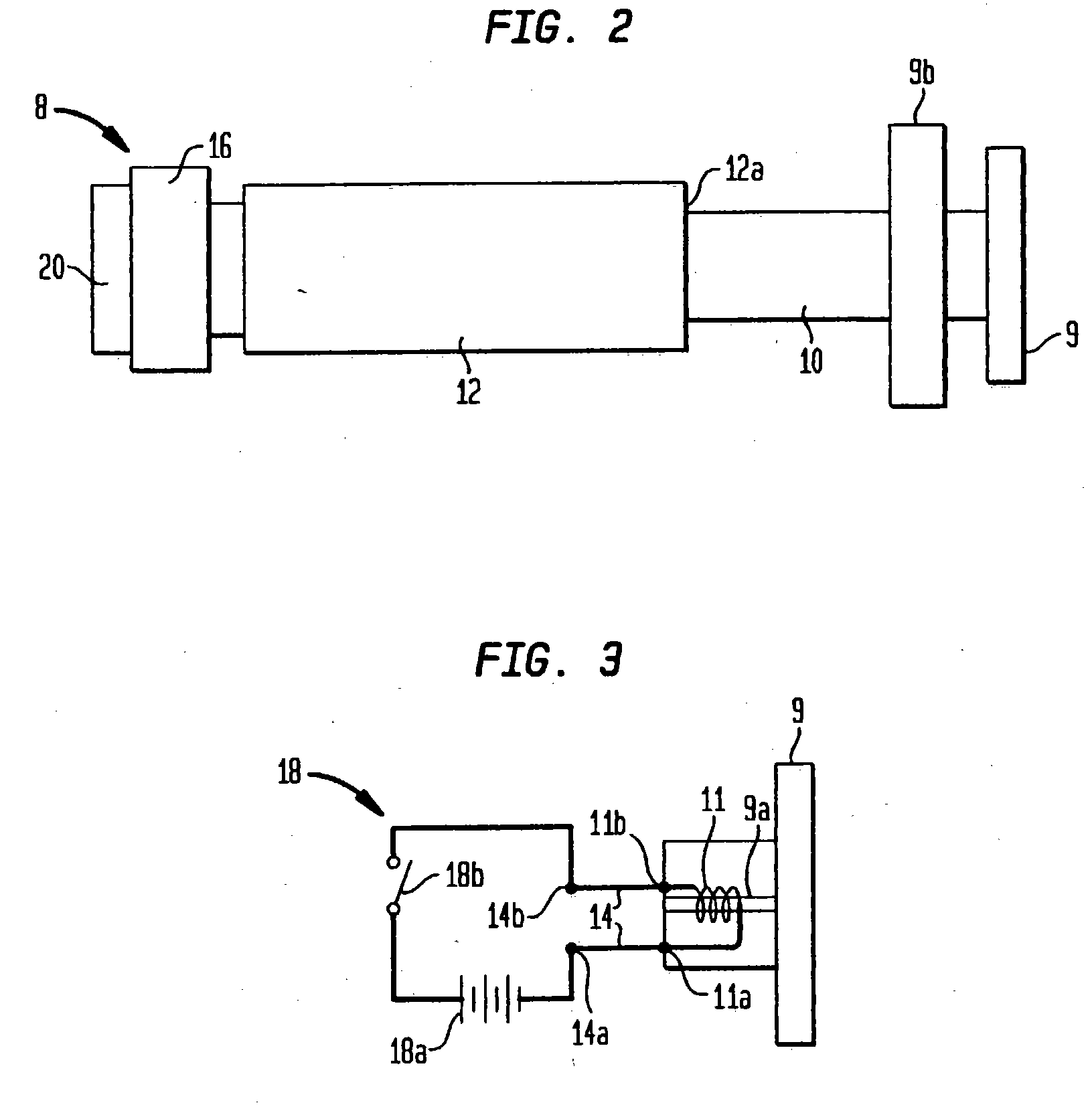Pen-sized telescoping electromagnet
a telescopic, magnet technology, applied in the direction of magnetic bodies, manufacturing tools, borehole/well accessories, etc., can solve the problems of insufficient strength to retrieve the desired item, small magnet employed, and often needed devices, etc., to achieve malleability, low breakage, and flexibility
- Summary
- Abstract
- Description
- Claims
- Application Information
AI Technical Summary
Benefits of technology
Problems solved by technology
Method used
Image
Examples
Embodiment Construction
[0026] Referring to FIGS. 1 and 2, the assembly of the flexible telescoping electromagnetic tool 8 according to the present invention is illustrated. The electromagnetic tool 8 is constructed in the manner of a collapsible wand, ballpoint pen or flashlight with a selectively actuated electromagnet at a tip thereof. The actuated electromagnetic tip is used to attach, move, manipulate, and / or pick up magnetizable objects such as screws, bolts, nuts, nails, tacks, and the like. The electromagnetic tool 8 is made of an end member or end cap 9 capping a tubular end section 10.
[0027] The end cap 9 is formed of a magnetizable material such as a nickel iron alloy and has an integral extension 9a that is coated with an electrical insulator and wrapped with an inductor 11 having contacts 11a and 11b as shown in FIG. 1 and in the circuit diagram of FIG. 3. Alternatively, the inductor 11 may be made of wire having an electrically insulating coating; and then, the extension 9a may be uncoated. ...
PUM
 Login to View More
Login to View More Abstract
Description
Claims
Application Information
 Login to View More
Login to View More - R&D
- Intellectual Property
- Life Sciences
- Materials
- Tech Scout
- Unparalleled Data Quality
- Higher Quality Content
- 60% Fewer Hallucinations
Browse by: Latest US Patents, China's latest patents, Technical Efficacy Thesaurus, Application Domain, Technology Topic, Popular Technical Reports.
© 2025 PatSnap. All rights reserved.Legal|Privacy policy|Modern Slavery Act Transparency Statement|Sitemap|About US| Contact US: help@patsnap.com



